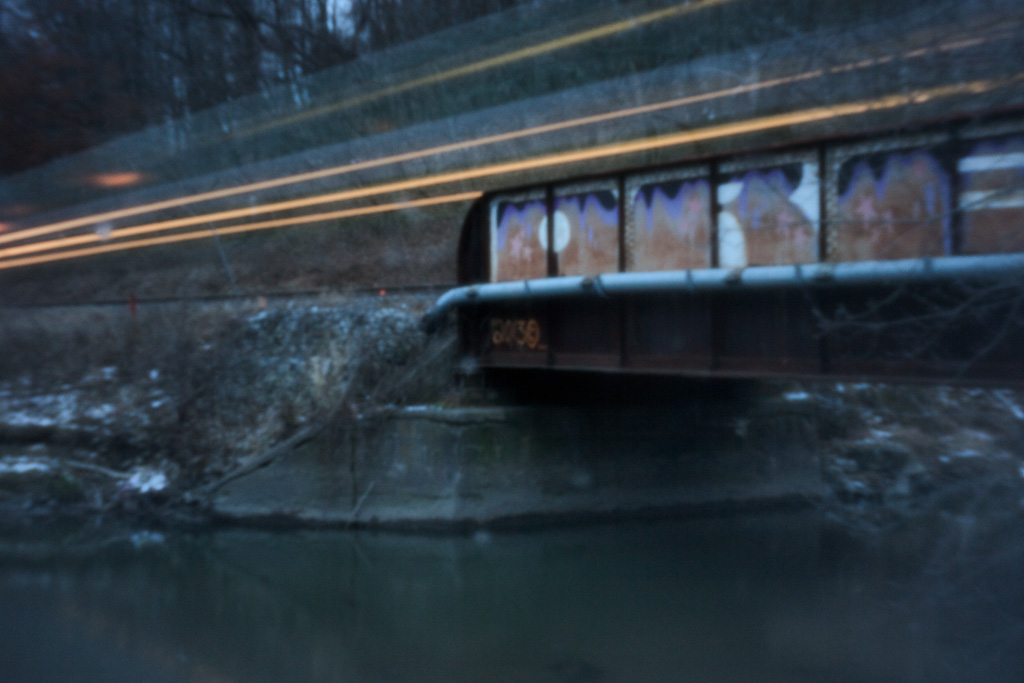I set up my tripod and frame a shot of railway tracks across the Don River. I use a 50 mm lens, then swap it out for a pinhole attachment that is roughly the equivalent of a 50 mm lens. I say roughly equivalent because pinhole lenses aren’t quite as precise as modern lenses. Technically, they aren’t even lenses. They’re apertures. To bastardize Leonard Cohen, they’re how the light gets in. But the light gets in unfocused so the images are blurred. And since so little light gets in (which is why I have to use a regular lens to set up the shot), the shutter has to stay open longer. How long is a matter of guesswork. In this case, I leave the shutter open for 135 seconds, which means that the train passing through my frame comes and goes all in one exposure. It leaves its traces in the blurred lines of the lights rushing past.
A commuter train like this carries how many people? 1000? 2000? There they are, rushing home after a long day at work, rumbling up the Don Valley to points north of the city. If I made this shot with a regular lens, you might be able to see faces gazing out of the train’s windows. Even then, because it’s dark and because the train is moving fast, the faces would appear blurred, almost ghostly. But with the pinhole lens, we can’t see the faces; the best we can do is infer their presence from the blurred lines where we would expect to see faces.
Whether or not we see ghosts in our frame depends very much on the shutter speed we use. Something analogous can be said when we gaze down a city street. A cursory glance is like a modern lens: we freeze the scene in an instant and have no sense of time passing. But a long hard look that engages the imagination and invokes deep time functions more like a pinhole lens and reveals how the street is inhabited by ghosts.
I offer the major intersection closest to my home as an example of how that works: Sherbourne and Bloor in Toronto. Today, the intersection is a hotbed of construction as condominium towers go up one after another. It’s hard to see the ghosts for all the concrete. But the writer, Hugh Hood, tells how, when he was a boy, Hooper’s Pharmacy stood on the southwest corner where we now have a Tim Horton’s. He remembers how a man spoke in a friendly way to the pharmacist, then walked onto the Sherbourne Street bridge and jumped to his death.
Long before that, from 1839 until the 1860s, a military blockhouse stood in the middle of the present-day intersection. It could accommodate 44 soldiers and was put there in response to the rebellion led by William Lyon Mackenzie. Looking even further back in time, before the first white settlers, we can imagine how Indigenous people used Rosedale Valley for transport, passing immediately beneath the site of the future blockhouse. And looking further still, we can see how melt waters from receding glaciers cut the deep ravine that would later become Rosedale Valley.
What we see depends entirely on how long we leave the shutter open.
